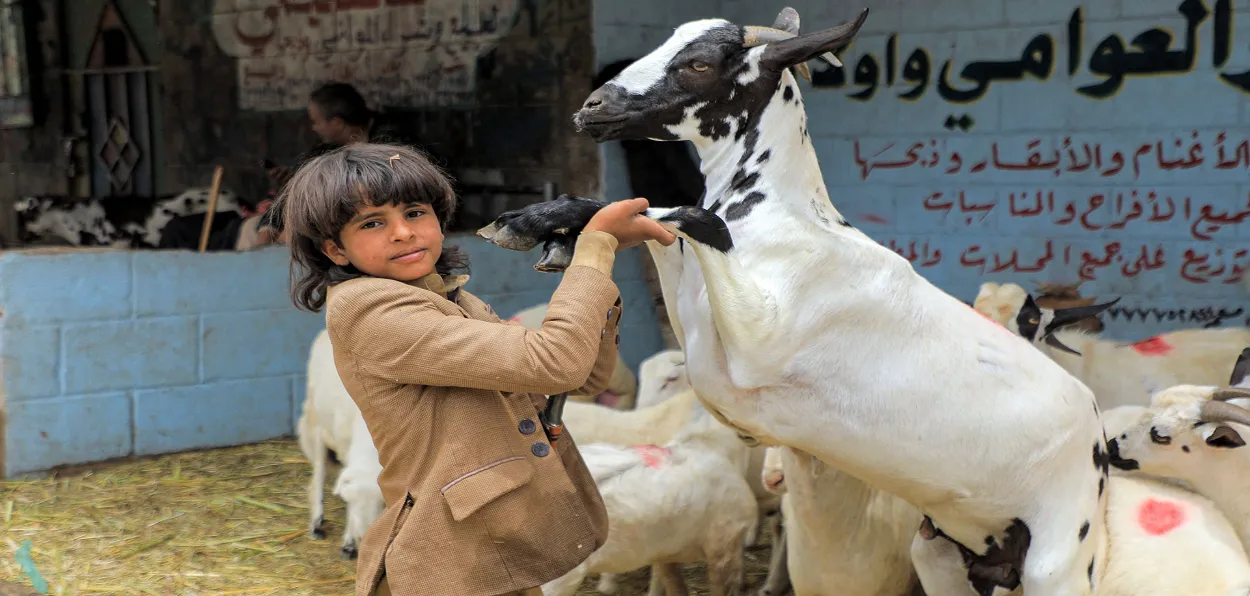
Dr. Muhammad Razi Islam Nadvi
For Muslims, the festival of Eid-ul-Azha (Bakr-Eid) rekindles the spirit of sacrifice. However, hasn’t the sacrifice become more of a ritual these days? Muslims performing the sacrifice should focus on the process of cleansing the soul, but this is not so these days. Therefore, it is important to discuss the meaning of the sacrifice at the festival.
Sacrifice is the purest form of worship. For this, worship must be of and for Allah, the Almighty. So, show-off is not required and should be avoided as much as possible. However, the advent of social media has given a tool for everyone to exhibit the act of sacrifice among other things.
When we worship, do we share its picture on social media? Or say, do we tell others about it while doing Tahajjud? When we give charity or zakat, do we announce it publicly? No, not at all! But the propaganda of renunciation has become an epidemic. It is considered necessary to post a photo of the sacrificial animal on social media. Some people even take the picture of the animal from different angles for posting on social media. Some people even take pictures of the animal as they are being sacrificed. The same is sent to friends through Facebook, WhatsApp, and other social media platforms.
Although animal sacrifice is permitted in the hadiths, these also clearly explain the etiquette of the act in the realm of sensibility of the Islamic Shari'a. For example, an animal should not be dragged in a manner that he feels pain. It is forbidden to pull the animal by its ear. It is said that the knife should be sharpened well before the sacrifice so that the animal feels the least pain while being slaughtered. The knife should not be sharpened in front of the animal. One animal should not be slaughtered in front of another animal. Do not start skinning the animal before its body has cooled down. However, usually, these days, mass slaughtering is done. Animals are slaughtered one after the other in a premise where these etiquettes are not followed. As soon as the animal is slaughtered, its skin is removed, due to paucity of time.
Eating the meat of the slaughtered animal is allowed; some meat is also encouraged to be distributed. The Messenger of Allah used to distribute a large portion of the meat. Some of his companions also divided the meat into three parts: they kept one and the second for friends and acquaintances, and the third part for the poor. The sacrificial animal can also be a big animal like Buffalo. It’s often seen that those receiving donated meat often ask if the meat is of a young animal or the aged one. If it happens to be of the older animal, they sometimes refuse to accept it. It turns the festival of Eid-ul-Azha into a season of meat-eating of the younger animals. This attitude is unhealthy and must be discouraged.
ALSO READ: Eid al-Adha is not about slaughtering animals, it’s about acquiring piety
On the occasion of Eid-ul-Azha, Muslim settlements present a scene of pathetically dirty places. Anyone passing through these would feel nauseated. This is ironic given the reality that the Prophet emphasized cleanliness and said that purity is half of the faith. In mixed settlements where people of other religions also live, Muslims should be even more careful and refrain from disturbing their neighbours with their actions. And do not be like the Jews” (Tirmizi: 2799). During the time of the Prophet, the Jews were famous for not taking care of cleanliness. Now the time has come that Muslims have gained fame in this matter, so other religions I say to the people, "Take care of cleanliness and don't become a Muslim like them."
(Courtesy: Social Media Desk, All India Muslim Personal Law Board)
